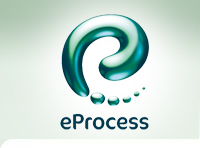Separator Solids Removal and Cyclonic Jetting – Goals & Objectives of FSM Training Module M7 (B-FSM-111)

We now move on to Facilities Sand Management training module FSM-M7 pertaining to separator solids removal and cyclonic jetting. I will compare traditional jetting versus cyclonic jetting technology.
For those that may have recently started reading this blog series I will restate some of the background information so that everyone understands the basis of this technology series.
Facilities Sand Management (FSM)
In this series, which started July 28, 2017 with blog post B-FSM-001, I am covering the entire contents of my training course entitled Facilities Sand Management. This is a training course originally designed for the Society of Petroleum Engineers (SPE) and has been given both at SPE and private-corporate events around the world. This is a 2-3 day course that covers both the design and operating philosophy, as well as unit-operations, for handling sand and solids in oil & gas production at the operating facilities. Some basic assumptions are as follows;
- Facilities: oil & gas upstream surface/subsea equipment for separation, cleaning, and energy addition (e.g. wellhead to custody transfer)
- Sand: tiny loose pieces of rock
- Management: to handle or direct with a degree of skill
FSM is not simply a waste stream treatment exercise…it is a critical Flow Assurance issue.
The stated objective is to increase / maximize hydrocarbons production…while reducing / minimizing operating costs.
Separator Solids Removal and Cyclonic Jetting Learning Goals
The following are the high-level learning goals that will be covered in this next series of articles.
- Production separators require solids removal (pre or in-situ)
- Particle collection in separator estimated by settling trajectory
- Jet frequently before sand consolidates or binds
- Standard Jetting
- Spray jets and sand pans
- Cyclonic Jetting
- Based on hydrocyclone principles with shielded vortex sand removal
- Any jetting system should always be automated
- Slurry Transport, Dewatering, and Disposal key part of system
The articles in this section will cover terminology, sizing & selection, operability, mechanical design, and flowsheet design.
References:
- Rawlins, C.H., “Design of a Cyclonic Solids Jetting Device and Slurry Transport System for Production Systems”, paper 166118, presented at the SPE Annual Technical Conference and Exhibition, New Orleans, LA, 30 September – 2 October, 2013. https://doi.org/10.2118/166118-MS
Next week I will start cover location of this technology in the FSM methodology flowchart and in the production system.
